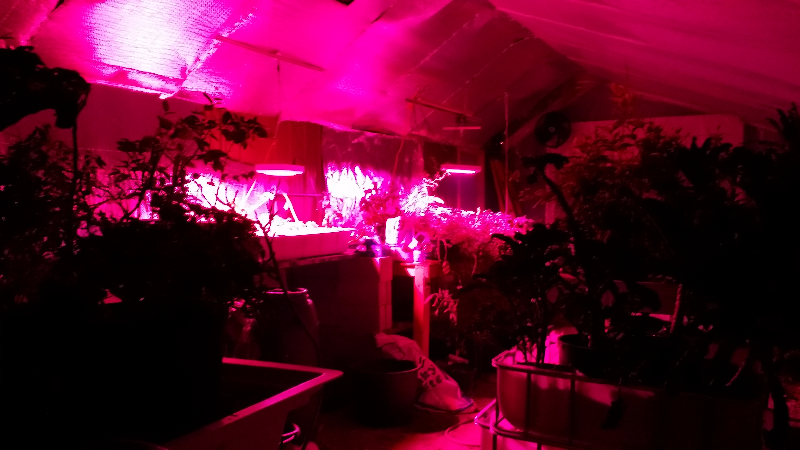It’s A Bug Eat Bug World!
 Danger lurks in a backyard garden. Aphids, cutworms, mealybugs and other pests are preying on your vegetables and flowers. Who’s an organic gardener going to turn to for help? Forget nasty, expensive chemicals, enlist the aid of “good bugs” that will battle and help control pest outbreaks and won’t even ask for a thank you, let alone a pay check.
Danger lurks in a backyard garden. Aphids, cutworms, mealybugs and other pests are preying on your vegetables and flowers. Who’s an organic gardener going to turn to for help? Forget nasty, expensive chemicals, enlist the aid of “good bugs” that will battle and help control pest outbreaks and won’t even ask for a thank you, let alone a pay check.
Gardeners turn to biological control (PDF format) for help and to reduce or eliminate the need for chemical pesticides. These insects are the natural enemies of garden pests. That’s great news for growers because it means there is an effective, non-toxic approach for solving your bug blues. But the benefits don’t stop there! Read on…
The Problem with Chemical Pesticides
Secondary Pest Outbreaks
The problem with broad spectrum conventional pesticides is that they not only kill the “bad bugs,” they rub out the “good bugs,” too. A garden without natural predators means a world of insects gone wild. There’s nothing left to keep pest levels in check. In fact, chemicals can mean double trouble because although you wipe out the first wave of pests, the second wave (not the usual pest, but another insect moving into the area) can cause even greater losses than the insects you were trying to get rid of in the first place (see Are Pests the Problem or Pesticides?).
“Hire” some beneficial insects and you won’t have this problem. They provide long-term control and will help tip the scales in your favor when insect pests arrive. In most cases, they’ll leave the good guys alone and will only go after the bad bugs.
Pesticide Resistance
Still not convinced? Another reason to go natural and use beneficials, is that a greater number of insects are now showing resistance to chemical pesticides. For example, in a controlled laboratory experiment, fruit flies were exposed to DDT – a banned pesticide. The research found that not only did the pesticide not kill them, but the fruit flies had developed a way to metabolize it! That is, the “super” flies could use the pesticide as food. Now that’s kind of scary. Watch for “Revenge of the Fruit Flies” coming to a theater near you.
Pesticide resistance is not an isolated problem. About 500 insect species now show resistance to conventional pesticides (see The Pesticide Treadmill). You won’t have that problem with biocontrol. No insects have shown immunity to being eaten. They can run, but they can’t hide!
Health and Economics
If effectiveness isn’t a good enough reason, maybe safe food will cause you to try insect predators & parasites. Interest in organic gardening and a growing demand for pesticide-free foods has exploded in recent years. Even carefully washed vegetables can still contain the chemicals that were sprayed on them at the farm. Families want to know that the food they eat is safe.
While organic used to mean expensive, natural pest control products are getting cheaper by the minute while pesticide costs — driven by resistance and regulatory action — are going through the roof.
What About the Home Garden?
The answer is… Take a common sense approach to pest control:
Do a little reading. Spend some time in your garden and consider using traps to identify garden pests (not all insects are pests!). Learn about the enemy. What is its life-cycle? When you understand the pest, you can time control measures to be most effective.
Determine your tolerance level. This level, called the economic threshold in commercial farming, will vary greatly between gardeners. How much damage is a given pest creating and what is it worth for you to get rid of it? Sometimes hand-picking a pest or blasting it off a plant with water will suffice – and it’s free! Always remember: not all pests cause enough damage to require action. Again, it’s a matter of common sense.
Let bugs do your dirty work. Release biocontrols, both as a preventative and as a control measure. Also, attract natural predators to your garden by planting a row or border of “insectary plants.” Fennel, calendula, coriander, dill, and cosmos are all considered good plants for attracting beneficials.
Wage war, if you must. But like any good commander, be aware of the effects of your actions and try to minimize costs and casualties. If treatment is required, begin with methods that are least damaging to natural controls and the environment. Read more about Integrated Pest Management here.
Make history. Keep a record of what happens so you know what worked and what didn’t. Not only will this help in planning your garden next year, but it will probably save you all kinds of time and money.
Enlist natural enemies in your pest battles and you’ll find a useful and friendly ally in your garden. The information available on this site will provide you with the tools you need to get started.
“Although chemical insecticide use in the United States has grown tenfold in both amount and toxicity since 1945, the share of crop yields lost to insects has nearly doubled during the same period.” – David Pimentel, 1991http://www.organicgardeningguru.com/beneficial-insects/





































